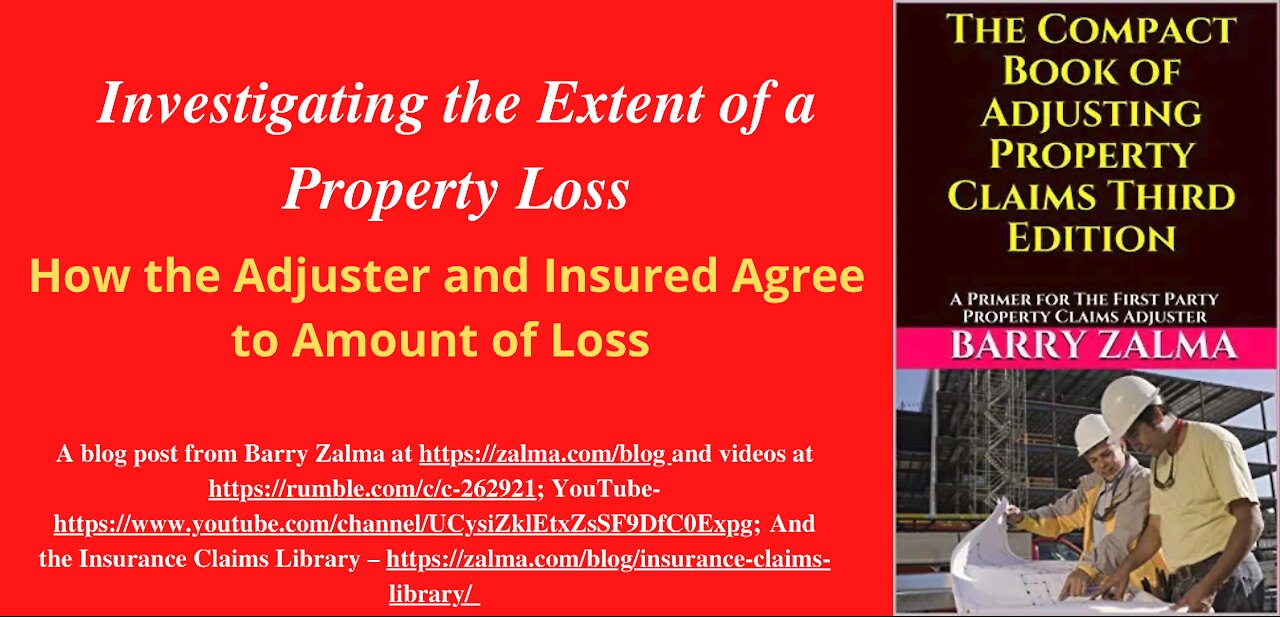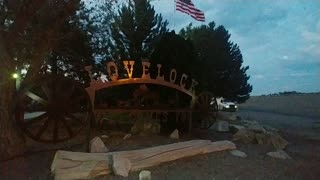Premium Only Content

Investigating the Extent of a Property Loss
T
o aid the insured in his or her obligation to prove the loss, the adjuster must, on the first visit, establish with the insured a detailed scope of loss. This means that the adjuster and the insured (or the insured with his or her Public Insurance Adjuster (PA)) must walk through the insured’s house or business and agree to exactly what was damaged and destroyed as a result of the peril insured against.
The adjuster can get this agreement orally with a tape recorder or write it down on paper. The scope of loss must be detailed. Descriptions, including room dimensions; materials like moldings, flooring, wall coverings, and fixtures; information about special features, openings, casements, detailing, moldings, and other architectural features must be part of the scope of loss. The scope of loss must be as complete and accurate as possible on a first inspection.
The adjuster must never, at the time of the first inspection of the damaged property:
take a quick look around and ask the insured to fill out a property loss form at his convenience;
leave the insured with blank forms, except for supplemental items learned of after the initial scope was completed;
take a partial scope and attempt to do the rest later;
rely on the expertise of the insured’s public adjuster; or
rely on a reconstruction contractor to establish the scope.
The adjuster should never make promises that cannot be kept. The adjuster must advise the insured that the adjuster will – if necessary – be retaining experts in the valuation and repair of the type of property that is involved. These experts will bid on the repair and replacement from the agreed scope. The adjuster should explain to the insured that the scope of loss may change when some demolition is done or when an expert examines the property, to change the extent of the scope and that it is just a first evaluation based only on visible damage.
Before any estimates for repair are prepared the adjuster must present the insured with a copy of the agreed scope and inform the insured that he may, if he wishes, obtain similar opinions based on the same agreed scope.
The adjuster should provide two general contractors (different from the construction consultant – if one was used to help the adjuster set the scope – with a copy of the adjuster’s scope of loss. Each contractor should prepare detailed estimates of the costs of repair based upon, and written in the same order as, the adjuster’s scope of loss so that the adjuster can identify the low bidder. The adjuster then should prepare an estimate of the cost of repairs for comparison with the estimates made by the contractors using the scope of loss and estimating programs like Xactimate, Marshall and Swift or Boekhs.
© 2021 – Barry Zalma
Barry Zalma, Esq., CFE, now limits his practice to service as an insurance consultant specializing in insurance coverage, insurance claims handling, insurance bad faith and insurance fraud almost equally for insurers and policyholders.
He also serves as an arbitrator or mediator for insurance related disputes. He practiced law in California for more than 44 years as an insurance coverage and claims handling lawyer and more than 54 years in the insurance business.
He is available at http://www.zalma.com and zalma@zalma.com. Mr. Zalma is the first recipient of the first annual Claims Magazine/ACE Legend Award. Over the last 53 years Barry Zalma has dedicated his life to insurance, insurance claims and the need to defeat insurance fraud. He has created the following library of books and other materials to make it possible for insurers and their claims staff to become insurance claims professionals.
Go to the podcast Zalma On Insurance at https://anchor.fm/barry-zalma; Follow Mr. Zalma on Twitter at https://twitter.com/bzalma; Go to Barry Zalma videos at https://www.rumble.com/zalma ; Go to Barry Zalma on YouTube- https://www.youtube.com/channel/UCysiZklEtxZsSF9DfC0Expg; Go to the Insurance Claims Library – https://zalma.com/blog/insurance-claims-library/ The last two issues of ZIFL are available at https://zalma.com/zalmas-insurance-fraud-letter-2/ podcast now available at https://podcasts.apple.com/us/podcast/zalma-on-insurance/id1509583809?uo=4
-
 7:40
7:40
Barry Zalma, Inc. on Insurance Law
1 year agoLoss of Inventory by Bankruptcy
180 -
 0:13
0:13
manmlovers
3 years agoKennison property
119 -
 1:19
1:19
KJRH
3 years agoTPD investigating overnight shooting
18 -
 4:24
4:24
manmlovers
3 years agoKennison property
69 -
 0:57
0:57
manmlovers
3 years agoKennison property
90 -
 3:49
3:49
manmlovers
3 years agoKennison property
83 -
 2:32
2:32
WXYZ
3 years agoRestoring Flooded Property
23 -
 1:18
1:18
BJKlinedinst
3 years agoLove our property!
34 -
 6:59
6:59
All Bleeding Eventually Stops
3 years agoProperty Clearing 2
25 -
 2:28
2:28
KGTV
3 years agoSDPD investigating social media post
852